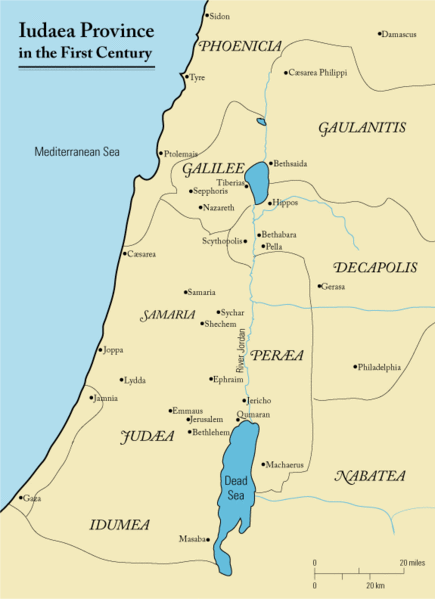Category:Perea (subject)
Perea was a Jewish region "across the Jordan River."
- This page is edited by Gabriele Boccaccini, University of Michigan
Overview
After the Babylonian exile, the territories "beyond the Jordan" were in the hands of the Tobiads, until the 2nd cent. BCE when the power of the Nabateans arose in the region.
As a Jewish district, Perea ("the country beyond") was born around 120 BCE when John Hyrcanus conquered some territories across the Jordan and forcibly converted its inhabitants to Judaism. The territory was secured by Alexander Jannaeus with the construction of the fortress of Machaerus.
Perea was part of the kingdom of Herod the Great. After his death in 4 BCE, it was assigned to his son Herod Antipas, as tetrarch of Galilee and Perea.
Perea was the area of activity of John the Baptist, who baptized on the Jordan River at "Bethany across the Jordan" (John 1:28; cf. 3:26; 10:40) and was imprisoned and executed at Machaerus by Herod Antipas. Jesus also preached in Perea on his way from Galilee to Jerusalem.
Perea was later ruled by Agrippa I. When he died in 44 CE, the region was annexed into the Roman province of Judea.
When the Gospel of Matthew says that John the Baptist preached "in the wilderness of Judea" (3:1), and refers to Perea as "the region of Judea beyond the Jordan" (19:1), it anachronistically applies to the time of Jesus the situation after the death of Agrippa I.
Perea in ancient sources
References
External links
Pages in category "Perea (subject)"
This category contains only the following page.
